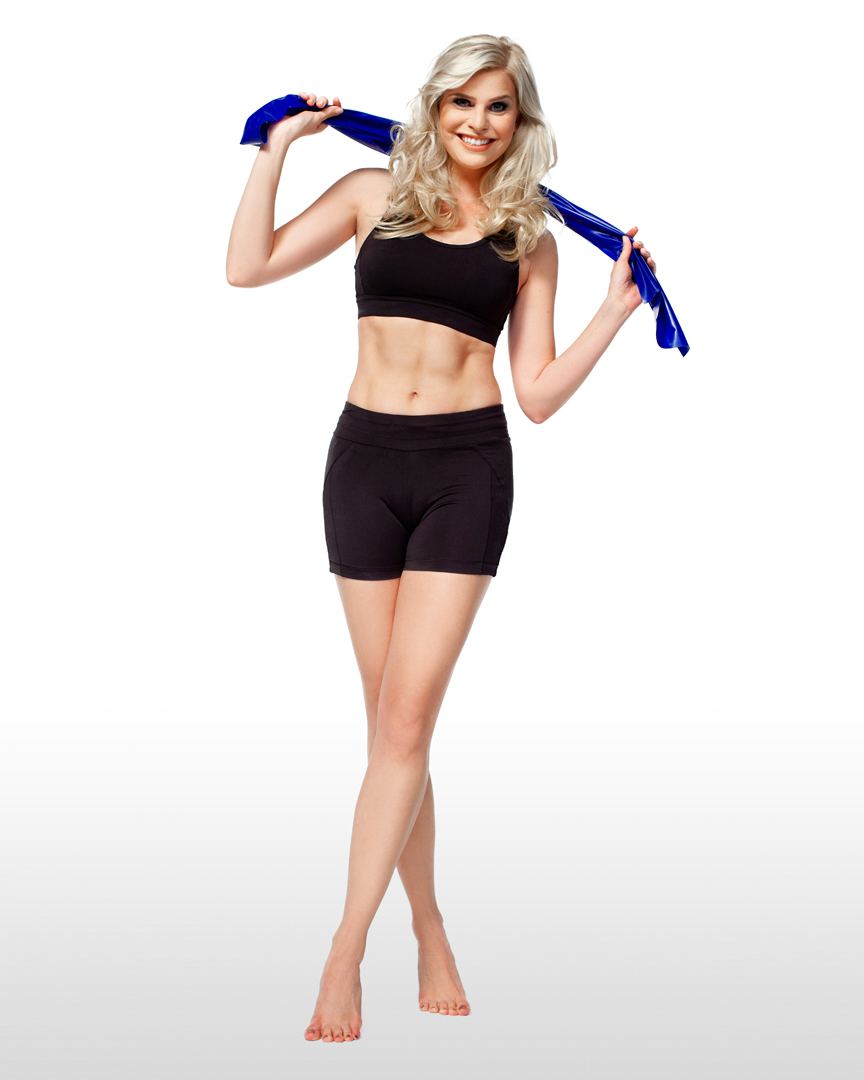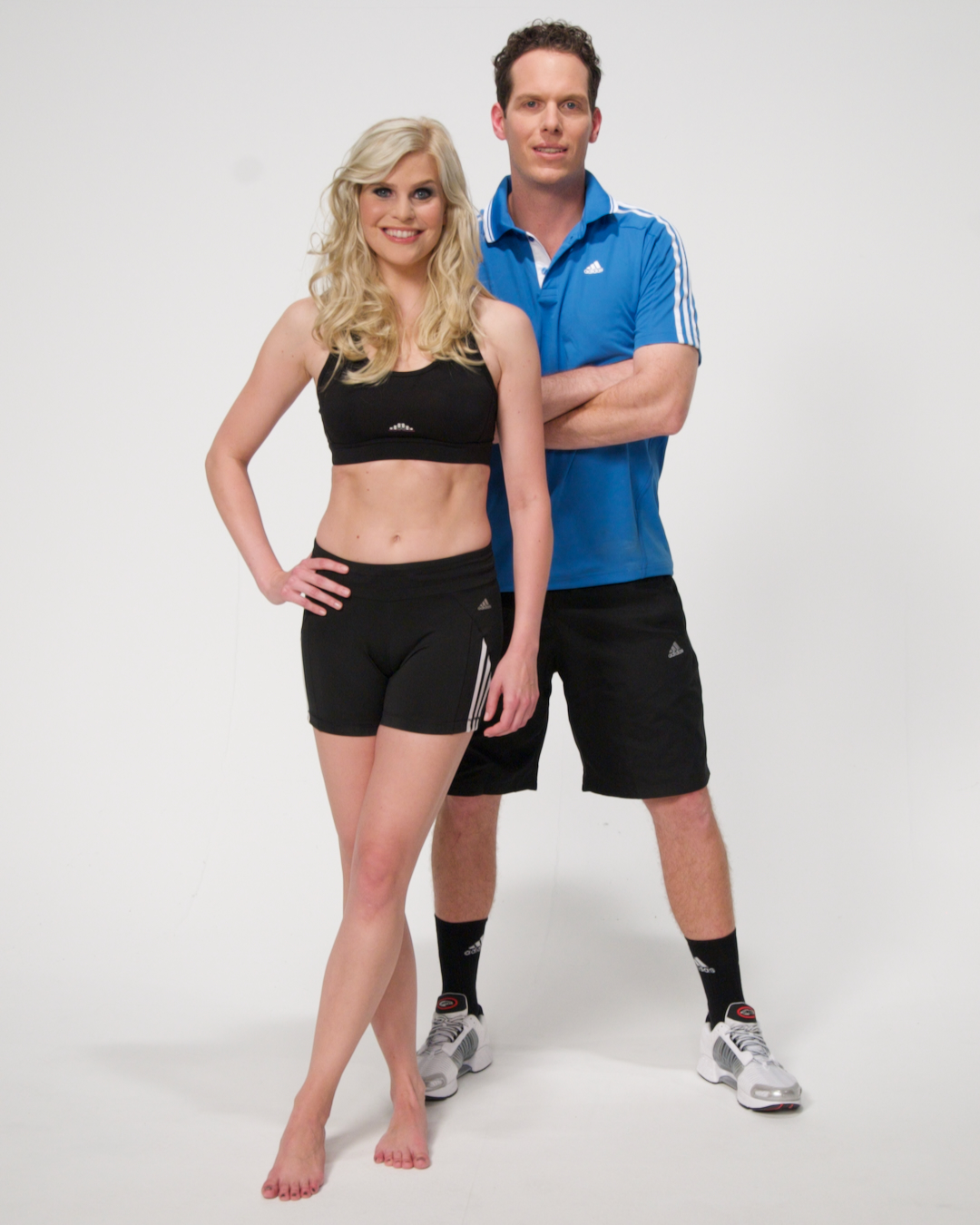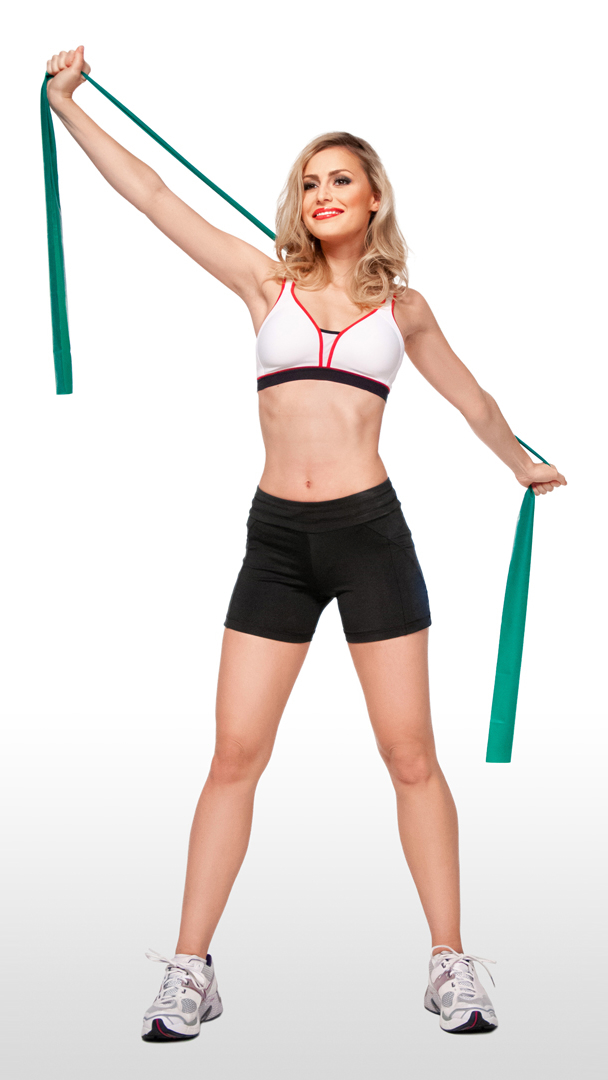
Whether you play tennis for fun, fitness, or competition, caring for your body with dynamic stretching exercises and mindful static stretching can support recovery, balance, and long-term joint health. A thoughtful cool down allows muscles to relax, restores the body’s natural alignment, and helps improve flexibility while encouraging smoother movement patterns.
Although dynamic stretching exercises are usually best suited for warm-ups, static stretching offers valuable benefits after activity. When practiced with intention, tennis cool down stretches can release tension, gently rebuild range of motion exercises, and help your body feel more open and relaxed.
What Are Static Stretching Exercises?
Static stretching is a type of stretching where a muscle or group of muscles is gently lengthened and held in one position—typically for 15 to 60 seconds. Unlike dynamic stretching exercises, which involve continuous movement, static stretches are still and controlled.
This form of stretching supports relaxation, promotes circulation, and gradually encourages longer muscle length. Over time, it can improve flexibility and assist with joint alignment, making it a safe, accessible option for people of all fitness levels.
What Type of Exercise Is Static Stretching?
Static stretching is considered a low-intensity, mobility-focused exercise that prioritizes recovery and relaxation. It is commonly used after physical activity as part of tennis cool down stretches or general self-care routines.
While dynamic stretching exercises are used to prepare muscles for movement, static stretching is best viewed as a recovery and flexibility enhancement tool. It supports range of motion exercises in a calm and controlled way.
Why Do Static Stretching After Exercise?
After a tennis match or workout, your muscles are warm, making it an ideal time for static stretching. Stretching during this phase encourages muscles to relax, supports faster recovery, and helps restore optimal joint positioning.
In addition, post-activity stretching reduces muscle tightness, supports circulation, and creates mental closure to your training session. When combined with dynamic stretching exercises earlier in the workout, it forms a beautifully balanced routine that nurtures both performance and recovery.
Why Static Stretching Is Not Usually Recommended Before Tennis
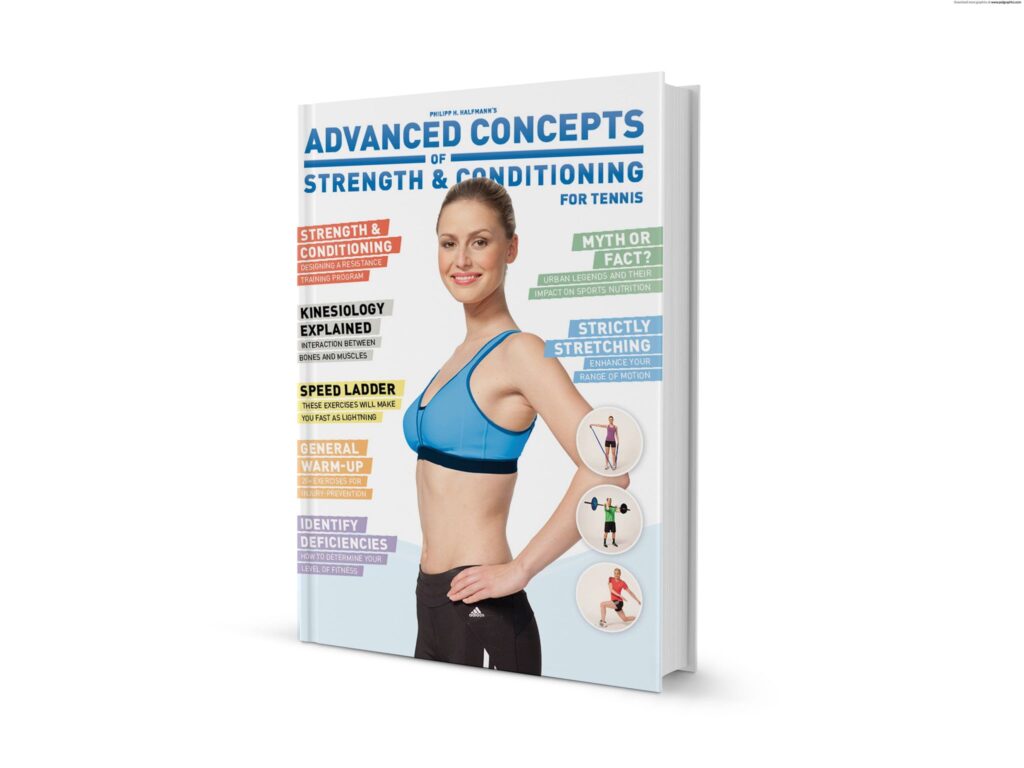
While static stretching is beneficial overall, it can reduce muscular tension temporarily. This can slightly affect your ability to generate power or move explosively on the court. That is why many athletes prefer dynamic stretching exercises before a match.
However, bodies are unique. If gentle stationary stretching makes you feel more comfortable or confident, it is still far better than skipping a warm-up entirely. A personalized approach always matters most.
For an ideal pre-match routine, explore the 21 dynamic stretching warm up exercises designed especially for tennis players.
What Are the Benefits of Static Stretching Exercises?
Regular static stretching offers many benefits, especially when used consistently as part of tennis cool down stretches:
- Helps improve flexibility over time
- Supports balanced range of motion exercises
- Encourages better posture and alignment
- Relieves muscle tension and tightness
- Enhances mind-body awareness
- Reduces risk of movement compensations
- Supports recovery and relaxation
These small, consistent efforts add up to smoother energy transfer and more efficient whole-body movement.
Static Stretching Exercises Recommendations
For best results, consider the following inclusive and beginner-friendly recommendations:
- Hold each stretch for 20–45 seconds
- Breathe slowly and deeply
- Avoid any sharp pain
- Perform each stretch 2–3 times per muscle group
- Stay relaxed and move gently in and out of the stretch
Pairing these with dynamic stretching exercises in warm-ups and tennis cool down stretches post-match creates a balanced mobility strategy.
Should You Static Stretch Before or After Working Out?
In most cases, static stretching is best performed after exercise or as a standalone flexibility session. Before activity, dynamic stretching exercises are typically more effective because they prepare muscles and joints for motion.
After activity, static stretches promote calm, support muscle recovery, and gently expand your range of motion exercises without stressing the tissue.
What Are Static Stretches for Legs?
Here are some excellent static stretching examples specifically for the lower body — essential in any set of tennis cool down stretches:
- Standing hamstring stretch – Helps improve flexibility in the back of the legs
- Seated calf stretch – Supports ankle and foot mobility
- Quad stretch – Gently lengthens the front thigh
- Butterfly stretch – Opens hips and groin
- Figure-four stretch – Targets the glutes and hip stabilizers
How Can I Incorporate Static Stretches Into My Daily Routine?
You don’t need to be a professional athlete to benefit from static stretching. Just a few minutes per day can help improve flexibility and promote mobility.
Try adding short sessions:
- Upon waking — gently reawaken your muscles
- During work breaks — reset posture and alignment
- Before bed — calm your mind and body
Even five minutes of intentional range of motion exercises can make a noticeable difference.
How Can I Incorporate Static Stretches Into My Workout Routine?
After completing your training, take 8–12 minutes for static stretching. This enhances recovery and balances the body after intense movement.
Pair your cool down with hydration and slow breathing for even greater benefit. Alternating days of dynamic stretching exercises and static flexibility sessions also works beautifully for maintaining healthy joints.
How Can I Incorporate Static Stretching Into My Cool Down Routine?
To build the perfect cool down routine for tennis, follow this simple sequence:
- Walk slowly for 2–3 minutes
- Perform deep breathing exercises
- Complete gentle tennis cool down stretches (legs, hips, upper body)
- Hydrate and refuel your body
This combination supports relaxation, enhances circulation, and encourages balanced recovery alongside earlier dynamic stretching exercises.
Energy Transfer, Alignment & Structural Balance
Our bodies work best when everything is in harmony. When one side is tighter than the other, energy may “leak,” reducing efficiency and increasing strain. Static stretching helps bring symmetry back and supports accuracy in movement.
Think of your body like a well-balanced structure: when all sides are aligned, it can carry more load with ease. Regular range of motion exercises and efforts to improve flexibility help create this sense of stability and strength.
Final Thoughts on Dynamic Stretching Exercises & Static Stretching
Combining dynamic stretching exercises with gentle static stretching can transform your tennis recovery experience. You don’t need to push or force anything; simply show up with kindness toward your body.
With consistency and care, you will continue to improve flexibility, expand your capabilities through range of motion exercises, and make tennis cool down stretches a nurturing part of your routine.
Every stretch you take is a step toward greater balance, comfort, and confidence in your body.
1. Anterior Deltoid Shoulder Stretch
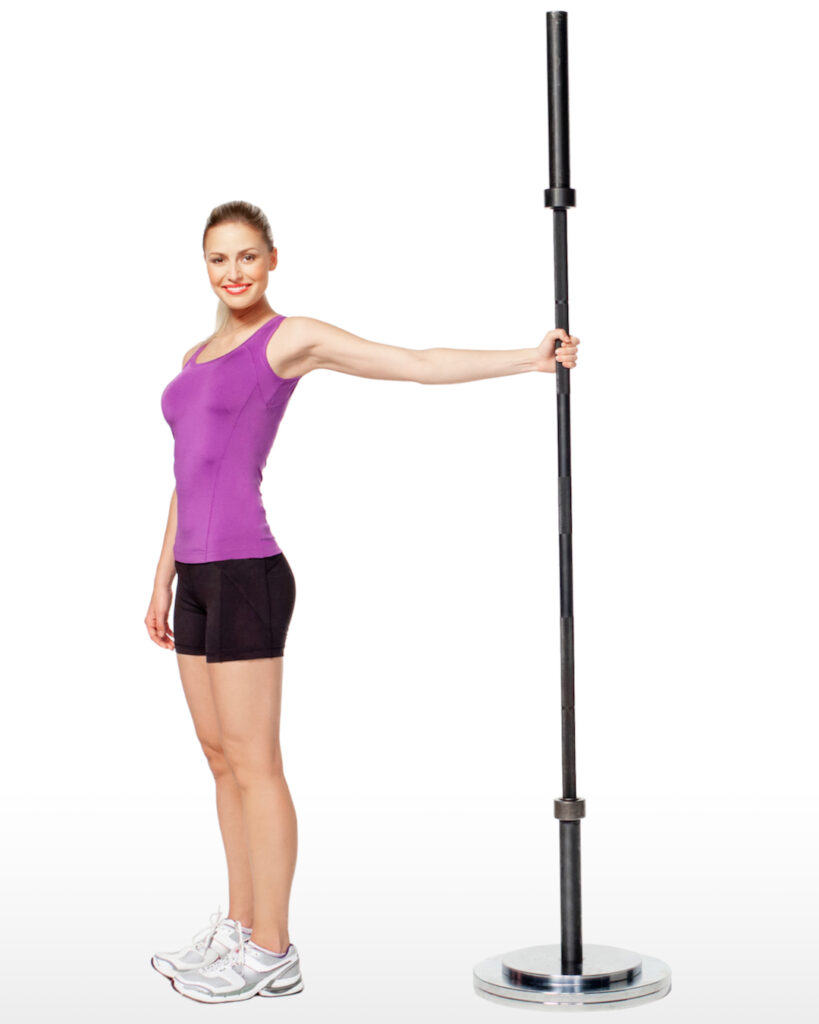
The Anterior Deltoid Stretch focuses on improving flexibility of the anterior shoulder musculature, the deltoids.
It can be used to reduce the risk for tennis injuries and aid in the muscle recovery process.
Therefore the anterior deltoid stretch is often included in the tennis strength and conditioning program such as during the post-workout or match static stretching routine.
You want to use a wall or an object to perform the anterior deltoid stretch because you need to hold onto it. To get started, position yourself perpendicular to the wall and raise the arm behind you and alongside the wall.
Now hold the stretch in this position for about 45 seconds before you switch sides. You should feel the stretch in the anterior part of your shoulder.
Voila, you just did the anterior deltoid stretch.
Anterior Deltoid Stretch Description Summary
- Stand perpendicular to a wall/object; shoulder faces wall/object
- Horizontally abduct shoulder to 90˚, extend elbow and supinate hand position; raise arm behind the torso until hand is in line with shoulder; palm of the hand touches the wall/object
- Maintain neutral pelvic and spine position; push chest out; look forward
- Hold stretch 45 seconds
Targeted Musculature
It targets the anterior deltoid.
2. Rotator Cuff Stretch

The Rotator Cuff Stretch aims at improving flexibility of the rotator cuff and muscles acting on the shoulder.
The rotator cuff stretch is usually integrated into a tennis strength and conditioning program to reduce the risk of tennis shoulder injuries and it aids in the muscle recovery process. Especially when you are working a lot on the serve or overhead slams.
You want to use a bar that is sturdy and a bit longer than your tennis racquet. Then take one arm behind the back and place the bar over your shoulder.
Now you grab the one end of the bar with one hand above your head and the hand behind your back grabs the lower end of the bar.
Use your shoulder as a pivot point and pull the bar towards the ground until you feel the stretch deep inside your shoulder.
Rotator Cuff Stretch Description Summary
- Extend the left arm behind the torso, internally rotate, and flex the elbow to ~90˚
- Grab the straight bar with the right hand, take it over the shoulder, and connect with the left hand
- Pull bar upward and then apply downward pressure on the bar; maintain neutral pelvic and spine position; look forward
- Hold stretch for 45 seconds
Targeted Musculature
It targets the:
- subscapularis
- pectoralis major
- latissimus dorsi
3. Butterfly Stretch
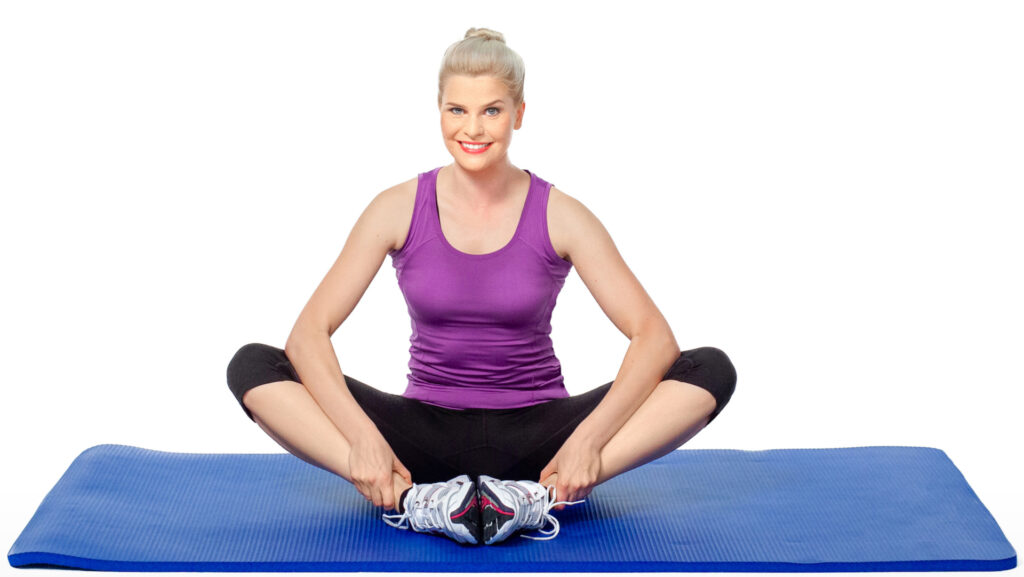
The Butterfly Stretch improves flexibility of the hip adductors, reduces the risk of injury and aids in the muscle recovery process.
During the butterfly stretch you probably want to use a mat for cushioning.
Simply sit down on and move the bottom of tour feet together.
Now grab your ankles with your hands, move your elbows on top of the knees and push them down towards the ground until you are feeling the stretch.
Butterfly Stretch Description Summary
- Place floor mat on the ground
- Sit down, abduct hips, flex knees, and move feet together
- Place hands on top of the knees and slowly push knees towards the ground
- Hold stretch for 45 seconds
Targeted Musculature
It targets the hip adductors.
4. Shin Stretch Alleviates Shin Splints
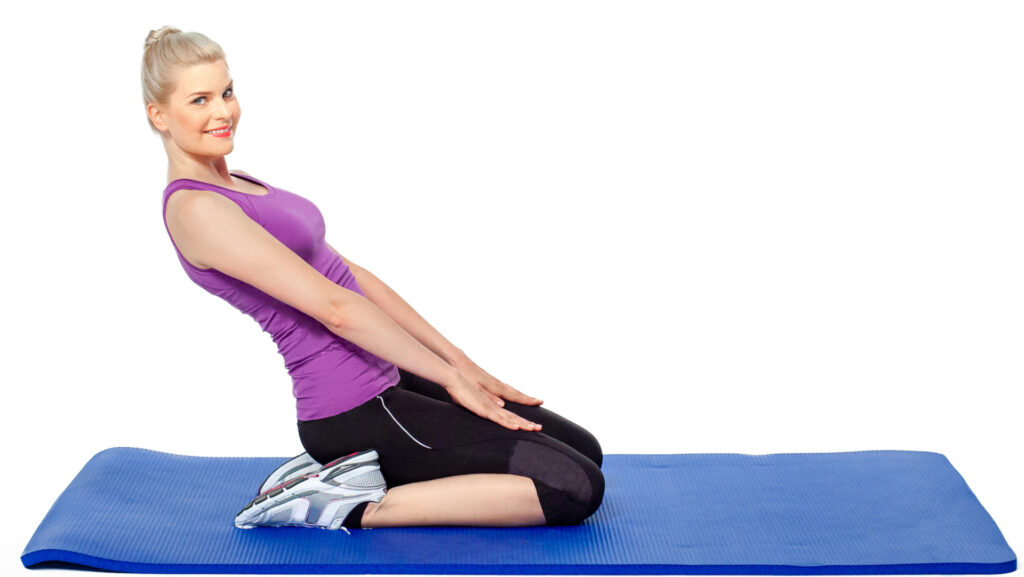
The Kneeling Shin Stretch gets rid of shin splints, improves flexibility, reduces the risk of injury and aids in the muscle recovery process.
If you suffer from shin splints, also known as medial tibial stress syndrome, usually caused due to repetitive jumping or running activities, then you should implement the kneeling shin stretch into your static stretching routine to alleviate the pain.
Simply kneel on the ground, sit on your toes and lean back until you feel the stretch!
Kneeling Shin Stretch Description Summary
- Place floor mat on the ground
- Kneel down, keep legs close together, flex knees at 90˚, and plantar flex the ankle; knees, shins, and toes have ground contact
- Flex knees, lean back and touch heels with buttocks
- Hold stretch for 45 seconds
Targeted Musculature
It targets the tibialis anterior.
5. Hip Flexor Stretch

The Hip Flexor Stretch can be used to correct tightness of the hip flexors. The stretching video demonstrates proper execution.
The hip flexor stretch helps in reducing the risk of injury and aids in the muscle recovery process after long matches or practice session.
Since most tennis players have tight hip flexors this stretch should be one of the essential stretches in your static stretch program.
As a visual aid we have the stretching video for you or take a look at the exercise description summary of the lunge hip flexor stretch.
Since you have to kneel it helps to have a cushioning device for the knee. Otherwise you will feel discomfort when holding the stretch for 45 seconds or longer.
Hip Flexor Stretch Description Summary
- Place floor mat on the ground
- Step into a forward lunge position; the knee of the rear foot has ground contact; knee of the front foot is flexed at 90˚ and doesn’t protrude past the toes
- Reposition the front foot forward until rear leg/hip is hyper-extended; maintain neutral spine and head position (straight back; look forward)
Note:
- If contralateral (opposite) elbow touches the lateral aspect of the forward knee, obliques will also be stretched
- Hold stretch for 45 seconds
Targeted Musculature
It targets the hip flexors and obliques if applicable.
6. Latissimus Dorsi Stretch
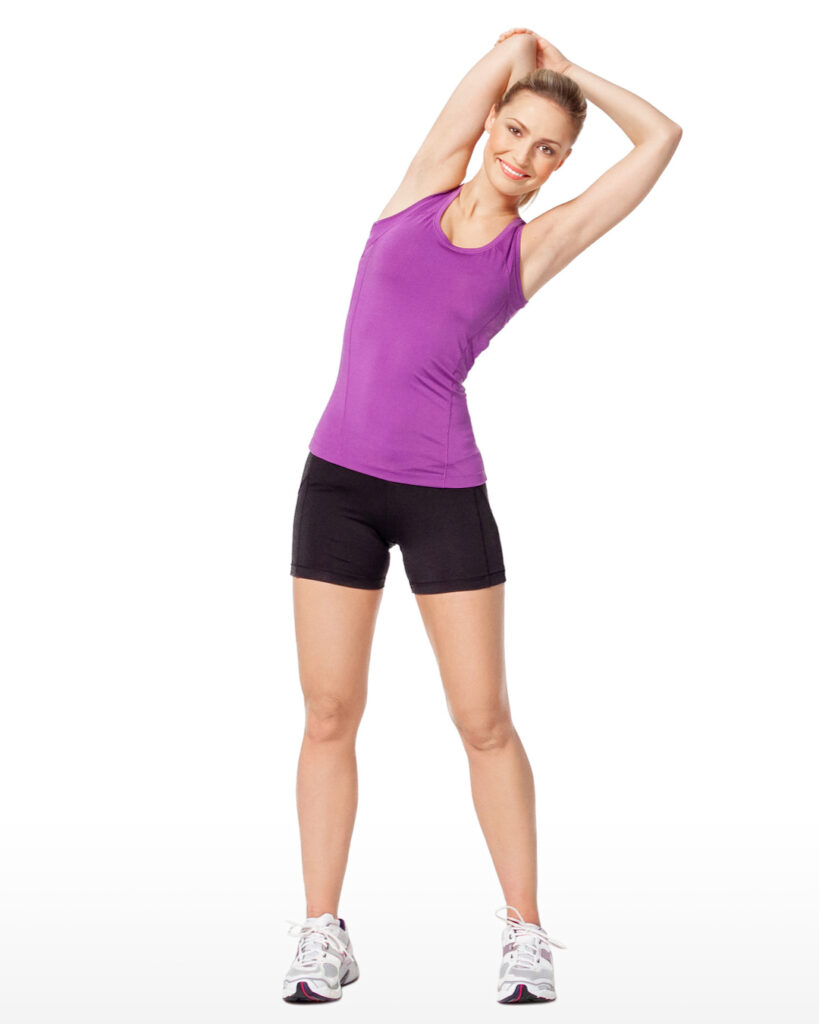
The overhead version of the latissimus dorsi stretch focuses on improving flexibility of the posterior shoulder and back musculature.
The latissimus dorsi often time is tight and hence restricts range of motion at the shoulder.
Therefore implement the latissimus dorsi stretch into your static stretching routine to correcting postural shoulder imbalances.
Aside from that the latissimus dorsi stretch can also reduce the risk of shoulder injury and aids in the muscle recovery process following intense upper-body strength workouts.
Latissimus Dorsi Stretch Description Summary
- Fully abduct shoulders until arms are overhead
- Flex the elbows and grasp the elbows with both hands; remain neutral head position; look forward
- Lean trunk to the left (left lumbar lateral flexion), use the left hand and pull the right elbow towards the head
- Also perform stretch to the other side
- Hold stretch for 45 seconds
Targeted Musculature
It targets the latissimus dorsi.
7. Overhead Triceps Stretch
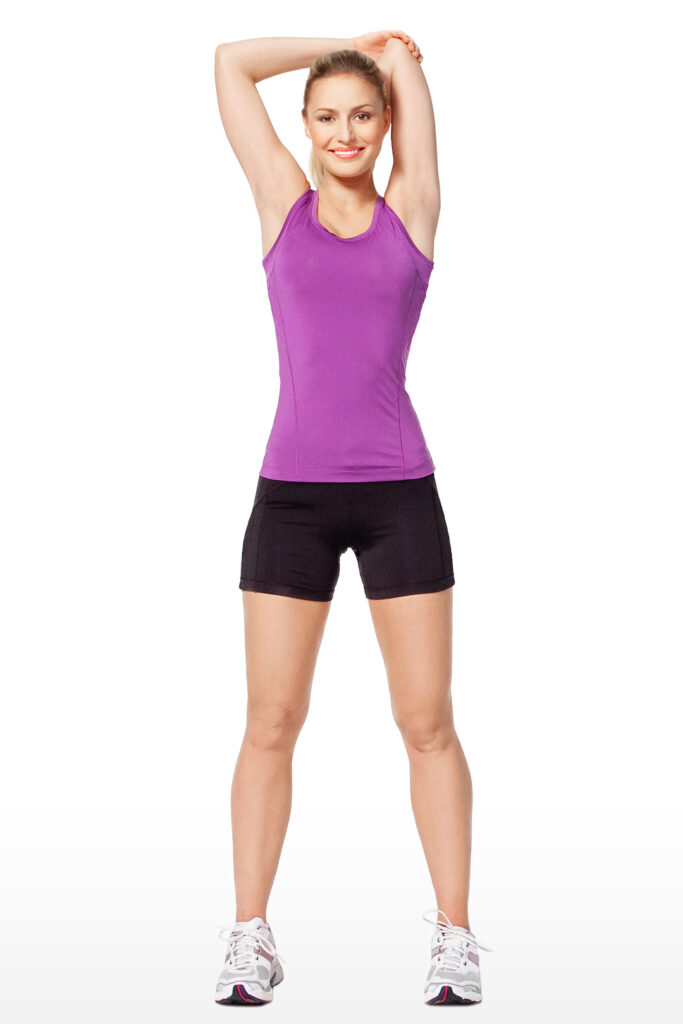
Use the Overhead Triceps Stretch to improve flexibility of the triceps and reduce the risk of injury at the elbow.
The overhead triceps stretch is important for improving flexibility, minimizing the risk for injury at the elbow and supporting of the recovery process after prolonged serving practice sessions or matches.
You should integrate the overhead triceps stretch into your static stretching program because it is used rather frequently during stroke production of the serve and backhand slice.
Watch the stretching video of the triceps for proper execution.
Overhead Triceps Stretch Description Summary
- Flex the shoulder, flex the elbow and move hand on top of the spine between the scapulae
- Take opposite hand and pull at the elbow towards spine and midline of the body
- Maintain neutral pelvic and spine (head) position; look forward
- Hold stretch for 45 seconds
Targeted Musculature
It targets the triceps.
8. Posterior Deltoid Stretch
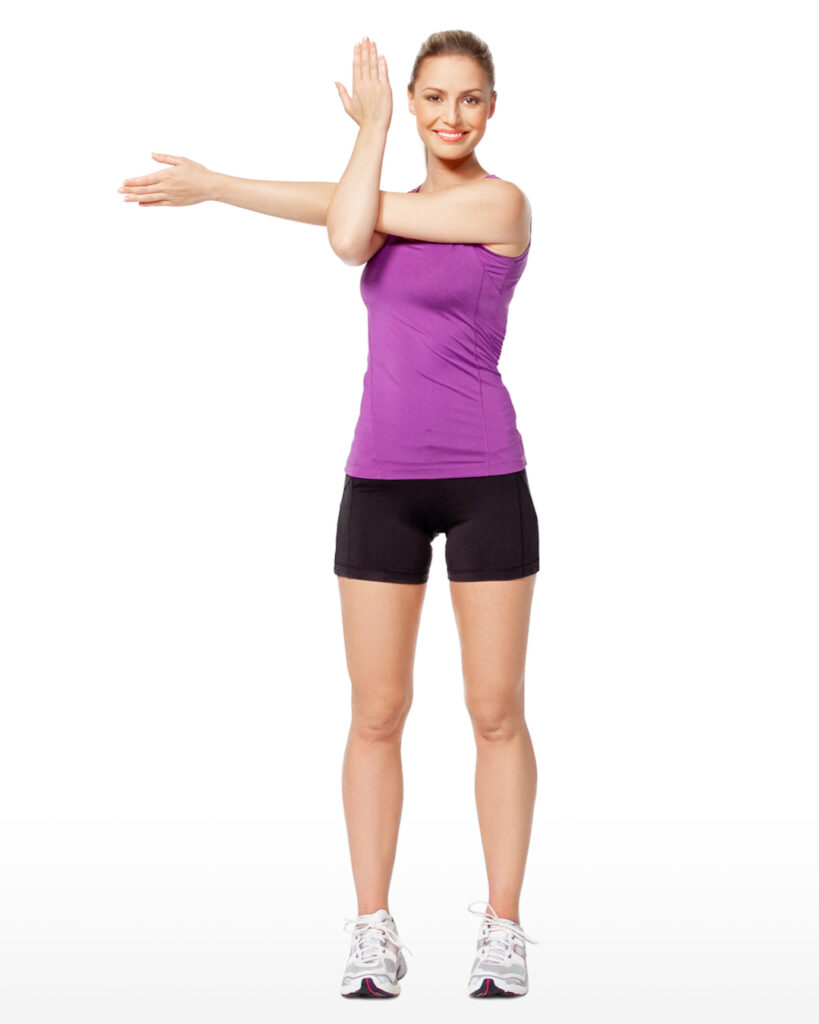
The Posterior Deltoid Stretch improves flexibility of the posterior shoulder musculature.
It is one of the essential static stretching exercises to avoid shoulder injuries.
Add the posterior deltoid stretch to your regular stretching routine to reduce the risk for injury at the shoulder and support the muscle recovery process. Especially after upper-body pulling workouts or intense forehand hitting sessions.
Posterior Deltoid Stretch Description Summary
- Horizontally adduct the shoulder at 90˚
- Move other arm underneath and flex the elbow to hold position of the horizontally adducted arm
- Maintain neutral pelvic and spine position; push chest out; look forward
- Hold stretch for 45 seconds
Targeted Musculature
It targets the posterior deltoid.
9. Seated Piriformis Stretch

The Seated Piriformis Stretch is a static stretching exercise focusing on achieving flexibility improvements of the external hip rotators.
Implementing the seated piriformis stretch into your regular static stretching routine is important because the external hip rotators are being activated during lateral movements such as moving along the baseline during ground strokes.
The piriformis stretch in seated position allows for better spinal alignment, which can positively impact range of motion capabilities of other muscles along the movement chain.
Seated Piriformis Stretch Description Summary
- Place floor mat on the ground
- Lay down in supine position (face up) and flex the knees
- Flex the right hip thereby bringing the right knee closer to the body; position the right ankle just below the flexed left knee
- Move the upper body off the ground and towards the knees until stretch can be felt in the buttocks; place arms behind the body on the ground to hold position
- Switch legs
- Hold stretch for 45 seconds
Targeted Musculature
It targets the piriformis.
10. Hamstring and Erector Spinae Stretch
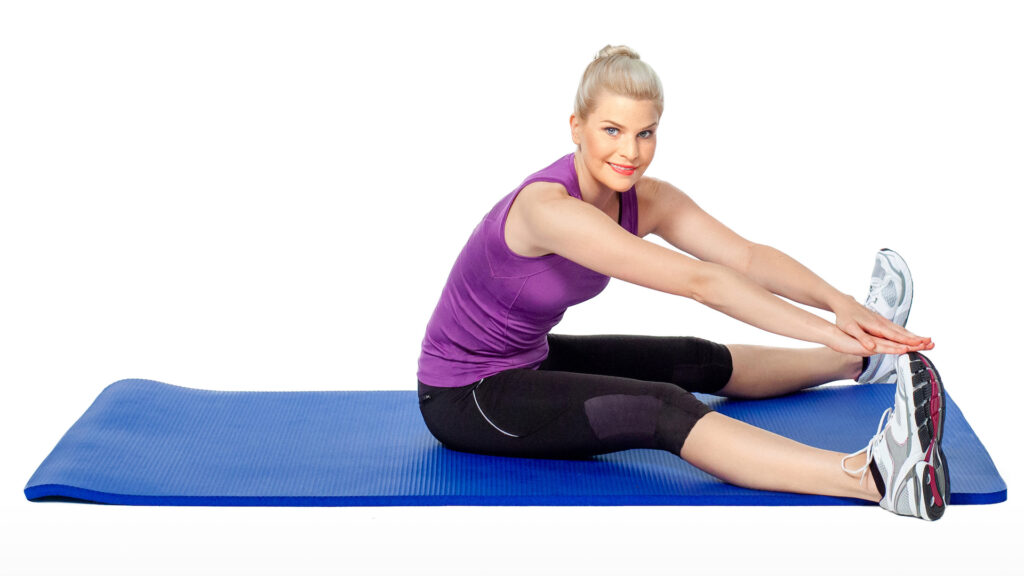
The Hamstrings and Erector Spinae Stretch improves flexibility of the knee flexors, trunk extensors and possibly the calves.
You should be regularly stretching out the hamstrings after intense practice sessions on the court or lower-body strength workouts in the gym to reduce the risk for injury and reduce the onset of delayed muscle soreness the following day.
The seated position also helps in stretching the erector spinae while maintaining spinal alignment, which can help in readjusting positioning of the pelvis.
This can reduce low back pain as well.
If you want to safe time the seated hamstring and erector spinae stretch is ideal because you are stretching three muscle groups at once.
Hamstrings & Erector Spinae Stretch Description Summary
- Place floor mat on the ground
- Sit down and abduct hips to a “V” with knees extended
- Lean forward with upper body and reach for each foot and down the middle of the “V” with both hands
- Grab toes if possible for an additional calve stretch
- Hold stretch 45 seconds
Targeted Musculature
It targets the hamstrings, erector spinae, gastrocnemius and soleus (calves).
11. Quadriceps Stretch
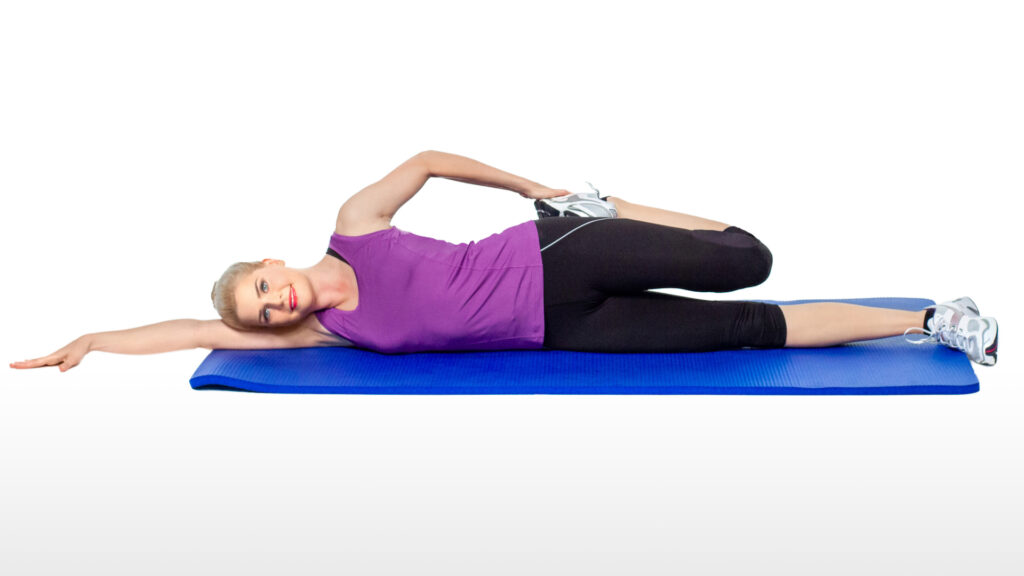
The static Quadriceps Stretch targets the knee extensors and is utilized to improve flexibility and aids in muscle recovery after ballistic jumping workouts.
Tennis players should do the quadriceps stretch regularly to prevent knee pain and reduce the risk for knee injuries.
If you extend the hip behind the torso during the quadriceps stretch then hip flexors can also be stretched.
Quadriceps Stretch Description Summary
- Place floor mat on the ground
- Lay flat on the side with legs close together; the to-be-flexed leg rests on top of the other; extend bottom arm; look forward
- Grasp the toes of the to-be-flexed leg and pull the heel towards the gluteus (buttocks); lower leg remains straight; maintain neutral pelvic position
- If applicable, extend hip behind the torso for an additional hip flexor stretch; maintain posterior pelvic position
- Hold stretch for 45 seconds
Targeted Musculature
It targets the quadriceps and hip flexors.
12. Pectoralis Stretch
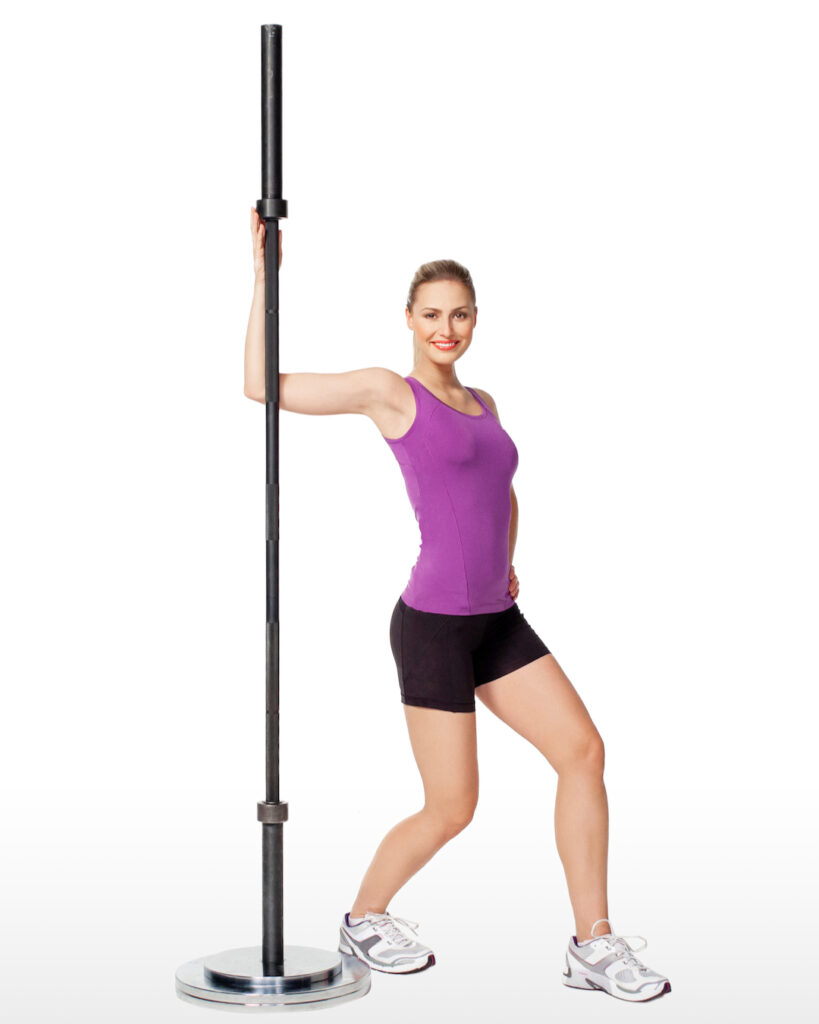
The Pectoralis Stretch improves flexibility of the anterior chest musculature and corrects postural shoulder imbalance.
Use it regularly after upper-body workouts to support the muscle recovery process.
Many tennis players have tight pecs due to overuse activities in the gym, such as bench pressing or pushups.
As a result the shoulders are tilted forward because the chest musculature is more developed then the back musculature.
If you want to start correcting the shoulder forward tilt then implement the pectoralis stretch into your post-workout static stretching program.
This can also reduce the risk for injury at the shoulder.
Pectoralis Stretch Description Summary
- Stand in front of an object (e.g. pole)
- At 90˚ shoulder flexion horizontally abduct the shoulder, externally rotate and flex the elbow; elbow and palm of the hand touch the pole
- Step forward with the contralateral foot and lean forward with the upper body
- Maintain neutral pelvic and spine position; push chest out; look forward
- Hold stretch for 45 seconds
Targeted Musculature
It targets the pectoralis major.
13. Standing Calves Stretch

Stretching calves is very important to improve flexibility, reduce the risk for injury and support the muscle recovery process especially when working a lot on the serve.
The calves are utilized during every step and especially during explosive jumps, such as during the service motion or overhead smashing.
Standing calves stretch can be used to prevent muscle strains and increase range of motion at the ankles.
Therefore stretching calves regularly makes sense.
Stretching Calves Description Summary
- Stand up straight, take a step, and position one leg in front of the other; place arms against a wall/fence
- Maintain ground contact with the heel of the rear foot, lean forward, and transition body weight to the front foot
- Hold stretch for 45 seconds
Targeted Musculature
It targets the gastrocnemius and soleus (calves).
14. Sumo Squat Stretch
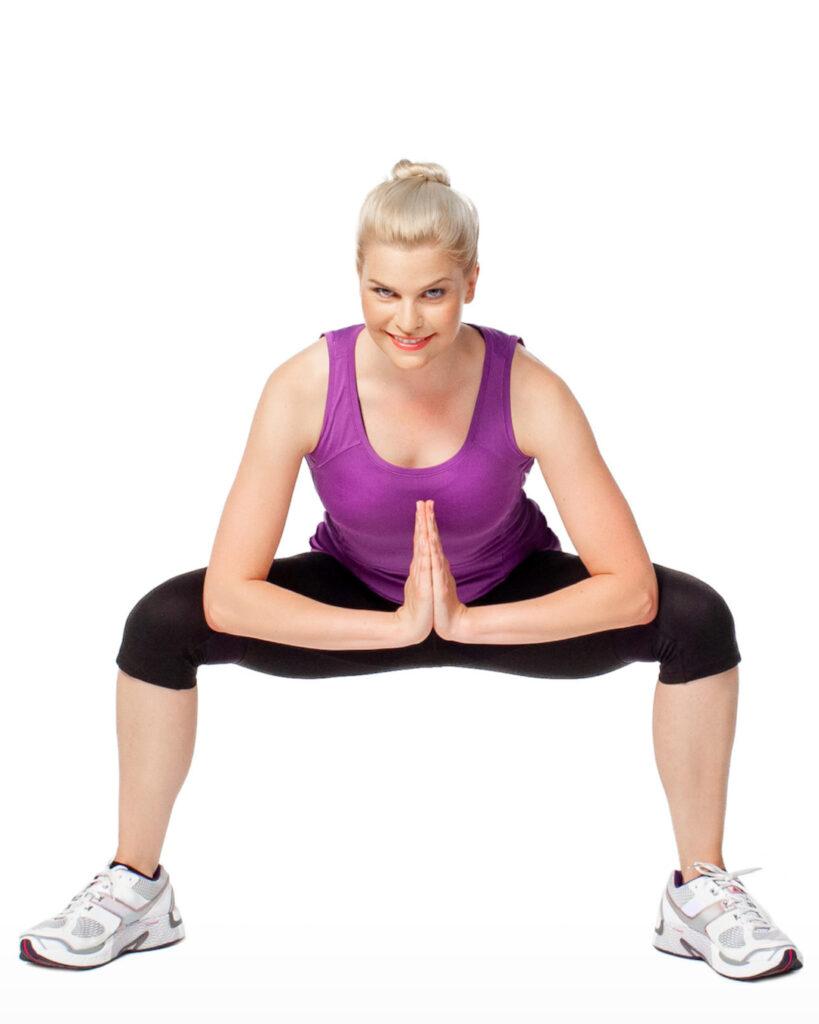
The Sumo Squat Stretch mainly focuses on improving flexibility of the glutes and hip adductors. It also opens up the groin area.
During the sumo squat stretch the athletes tries to sit down as low as possible, bringing the buttocks towards the heels; the sumo squat stretch is very helpful in reducing the risk for injury of the groin area.
Squat stretching can also be helpful is an indicator of possible pelvic limitations.
If the buttocks does not surpass the knees then further testing is needed to determine what muscle group is the limiting factor due to pelvic misalignment.
Pelvic misalignment (e.g. anterior pelvic tilt) can cause low back pain.
Sumo Squat Stretch Description Summary
- Move feet wider than shoulder-width
- Drop down into a (deep) squat, place elbows at the medial aspect of the knees (inside knees), and move palms of hands together; abduct feet slightly (toes point outward); maintain neutral spine position; look forward
- Hold stretch for 10 seconds before pushing knees together
- Hold stretch for 45 seconds
Targeted Musculature
It targets the glutes and hip adductors.
15. Abductor Stretch & Oblique Stretch
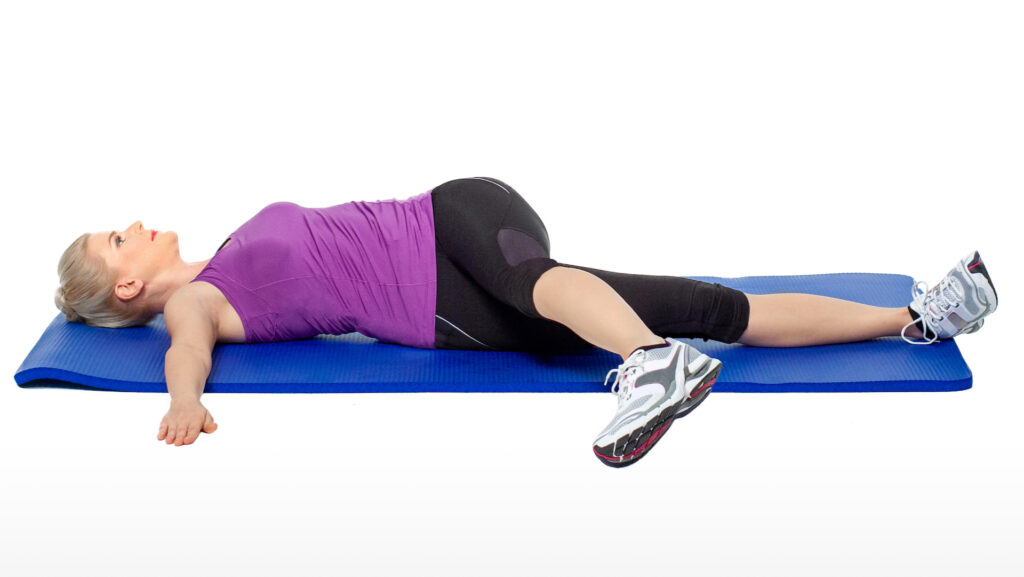
The Abductor Stretch & Oblique Stretch focuses on improving flexibility of the hip abductors and trunk rotators. It is a two in one static stretching exercise.
Focus is on improving flexibility of the hip abductors and obliques, thereby improving range of motion and minimizing the risk for injury.
You should implement this oblique stretch and abductor stretch into your static stretching routine because they are being used constantly during stroke production (e.g. trunk rotation) and change of direction.
By regularly stretching out the obliques and hip abductors you can support the muscle recovery process following intense matches or practice sessions.
Oblique Stretch and Abductor Stretch Summary
- Place floor mat on the ground
- Lay down in supine position (face up); knees are extended shoulder-width apart
- Extend arms and raise them to 90˚ of shoulder abduction
- Flex one hip to 90˚; knee is extended
- Internally rotate trunk, hereby bringing foot towards the ground, while maintaining ground contact with both scapulae (shoulder blades)
- Hold stretch 45 seconds and perform to the other side
Targeted Musculature
It targets the hip abductors and obliques.
16. Erector Spinae Stretch
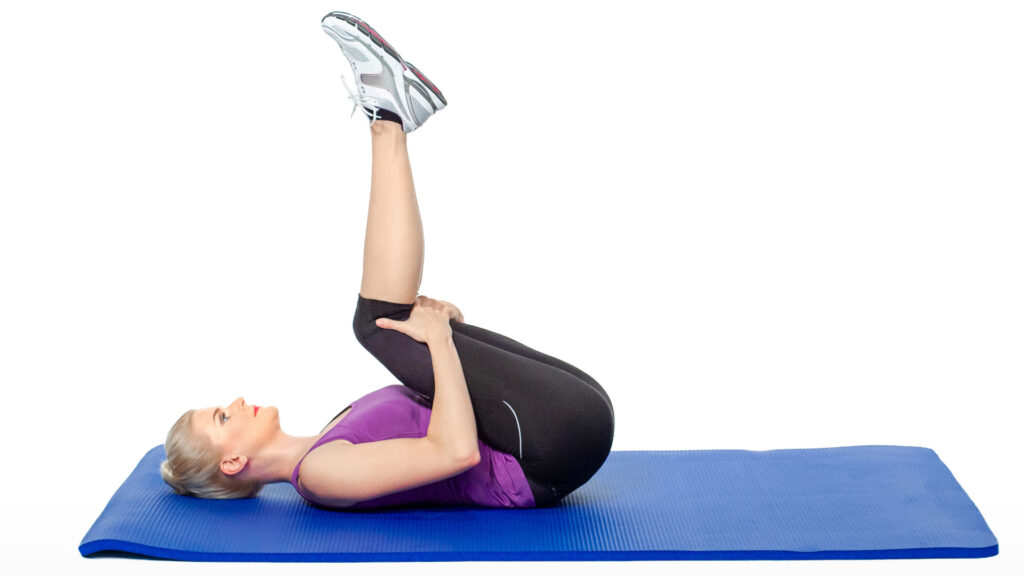
The Supine Erector Spinae stretch targets the large spine extensor muscle group used during stroke production. Its main purpose is to improve flexibility.
The erector spinae stretch is important for tennis players since this large muscle group is being activated during groundstrokes and the serve.
During groundstrokes the erector spinae plays a supporting role in trunk rotation, basically laterally rotating and stabilizing the spine.
When serving the erector spinae assists during lateral flexion of the spine during the ipsilateral loading and cocking phase of the serve.
To reduce the risk for injury and support the muscle recovery process, you should incorporate the erector spinae stretch into your static stretching routine.
Erector Spinae Stretch Description Summary
- Place floor mat on the ground
- Lay down in supine position (face up); head remains ground contact
- Flex hips and knees to 90˚; knees are shoulder-width apart
- Grab the lower hamstring with both hands and pull knees towards chest/shoulders
- Maintain neutral spine position (head ground contact); hips can come off the ground
- Hold stretch for 45 seconds.
Targeted Musculature
It targets the erector spinae.
17. Glute Stretch: Knee to Chest
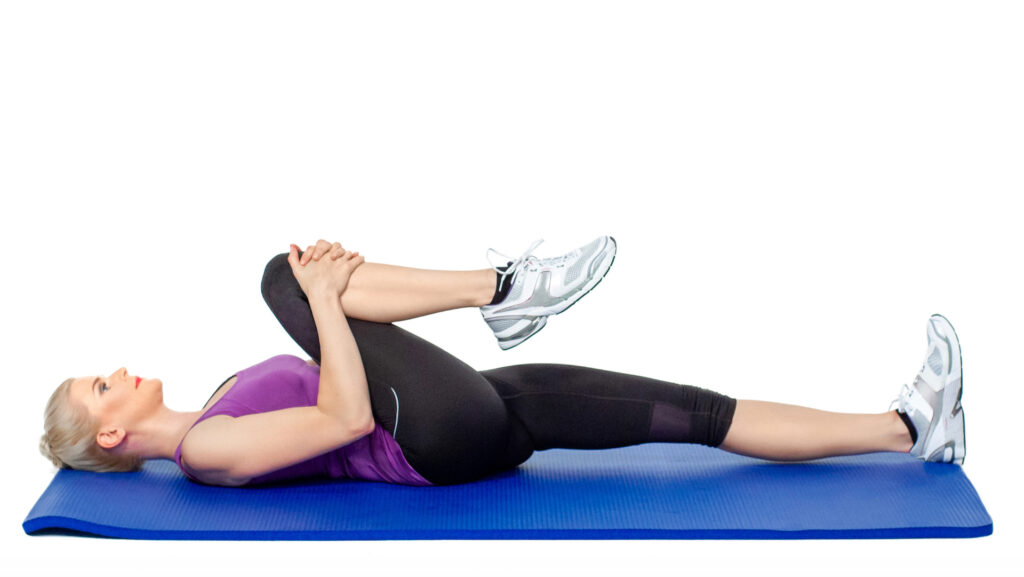
The Supine Knee to Chest static glute stretch exercise can be used to improve flexibility of the hip extensors.
This glute stretch is important for tennis players because the hip extensors are used during every step or jump.
Hence stretching the glutes regularly is important to reduce the risk of injury and support the muscle recovery process.
In addition, the supine version of the glute stretch allows you to better fixate the position of the pelvis because you are lying down.
Having ground contact to support the gluteal stretch is better than performing the same glute stretch while standing upright.
Glute Stretch Description Summary
- Place floor mat on the ground
- Lay down in supine position (face up) and keep legs close together with toes pointing straight upwards
- Flex one hip to 90°, hold leg with both hands below the knee, and pull it towards the chest
- Maintain neutral spine- and pelvic position
- Hold stretch for 45 seconds.
Targeted Musculature
It targets the glutes.
18. Oblique Stretch Targets Trunk Rotators
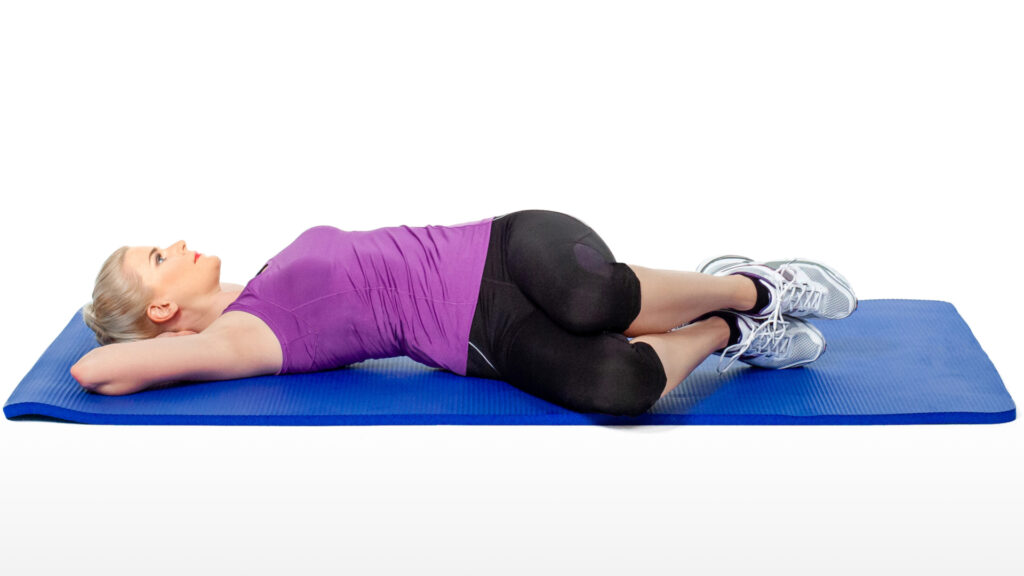
Supine Oblique Stretch improves flexibility of the trunk rotator musculature, reduces the risk of injury and aids in the muscle recovery process.
The oblique stretch is essential for tennis players because the trunk rotators aid in the power production during groundstrokes and the serve.
Obliques consist of fast twitch muscle fibers that have the capability for high force output. Therefore developing and maintaining the obliques is essential so include the oblique stretch into your static stretch routine!
Oblique Stretch Description Summary
- Place floor mat on the ground
- Lay down in supine position (face up); knees are shoulder-width apart
- Flex knees to 90˚
- Place hands behind the head (90˚ of shoulder abduction)
- Externally rotate trunk, thereby bringing knees towards the ground, while maintaining ground contact with both scapulae (shoulder blades); upper leg rests on top of lower leg.
- Hold stretch 45 seconds and perform to the other side
Targeted Musculature
It targets the obliques.
19. Static Hamstring Stretching
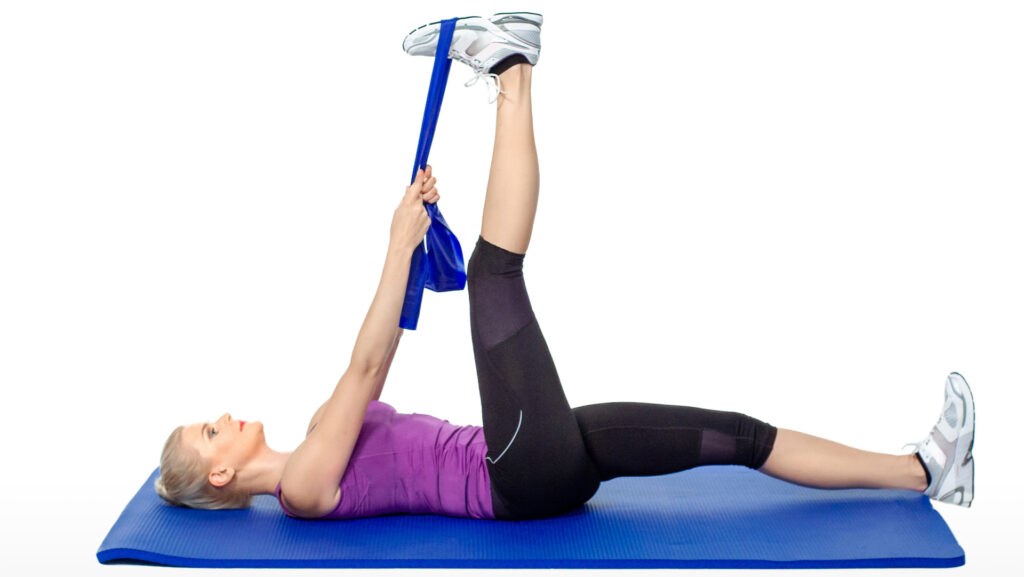
Hamstring stretching enhances flexibility of the hip extensors, reduces the risk for injury and supports the muscle recovery process.
Hamstring stretching becomes important especially following speed, agility and quickness training or explosive hip flexion and hip extension resistance training because the hamstrings have to handle high force output.
Injuries in the hamstrings also can occur due to strength imbalances of the quadriceps and hamstrings when the hamstrings cannot handle the stress during deceleration.
Therefore, incorporate the Supine Towel Hamstring Stretch into your static stretching routine.
Hamstring Stretching Description Summary
- Place floor mat on the ground
- Lay down flat in supine position (face up) with legs close together and toes pointing straight up
- Flex the hip and lift one leg off the ground; maintain head ground contact (neutral head position)
- Hold towel in both hands and wrap it around the toes
- Keep knee extended and slowly pull leg into ~90˚ of hip flexion (towards the head) or as far as possible
- Maintain hip ground contact of the non-stretched leg and point toes straight up (neutral pelvic position)
- Hold stretch for 45 seconds.
Targeted Musculature
It targets the hamstrings, gastrocnemius and soleus (calves).
20. Shoulder Stretch For Internal Rotators
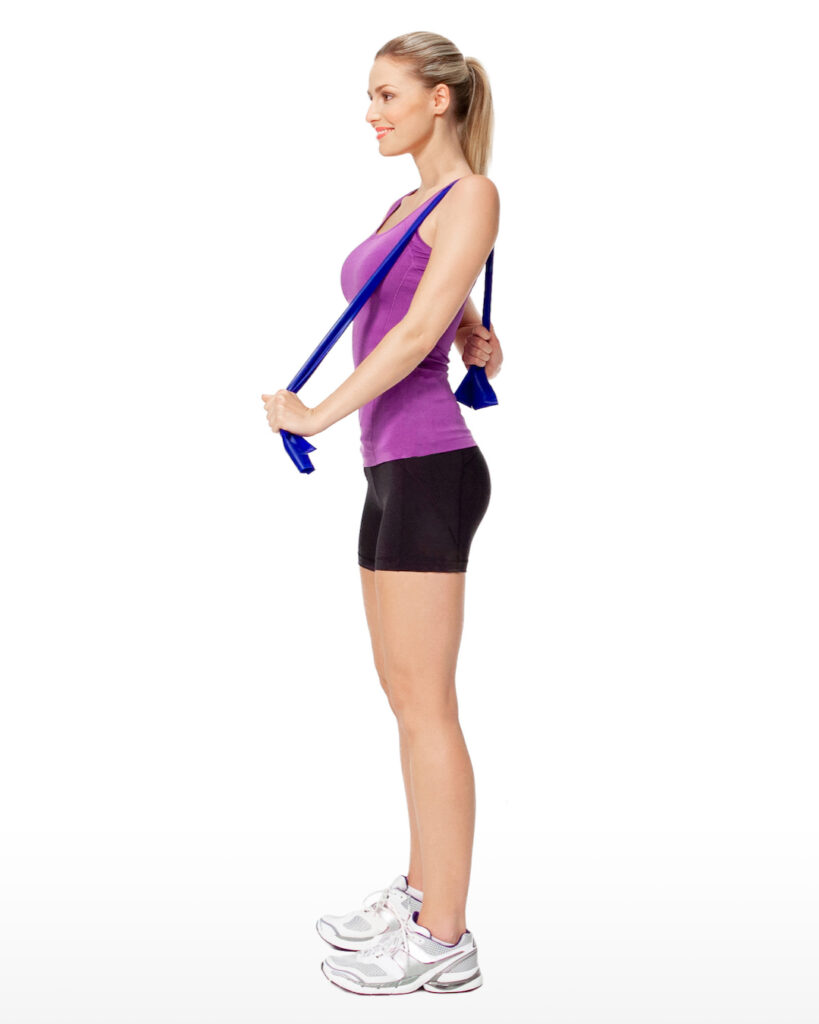
The Towel Shoulder Stretch improves flexibility of the often times overused internal shoulder rotators and helps tennis players reducing the risk of shoulder injuries.
This shoulder stretch is a must for you because it helps to correct postural imbalances at the shoulder and aids in the muscle recovery process.
Often times tennis players have a forward tilt of the force producing shoulder since the internal shoulder rotators are stronger developed than the external shoulder rotators.
Reason being is that the internal rotators are constantly used during powerful stroke production and many tennis players do inadequate strength programs, where upper-body pressing actions dominate instead of pulling exercises.
Therefore, if you want to correct postural imbalances at the shoulder then do the towel shoulder stretch regularly and focus more on pulling exercises during strength training.
Shoulder Stretch Description Summary
- Take towel in the right hand and place it behind the head; reach down the spine as far as possible
- Maintain neutral head position – look straight forward
- Take left hand and grab the towel behind the back
- Pull towel over the right shoulder and slowly apply the stretch to the right shoulder
- Now, switch hands; left hand holds the towel and is placed behind the head, right hand grabs the towel
- Pull towel over the right shoulder and slowly apply the stretch to the left shoulder
- Hold stretch for 45 seconds
Targeted Musculature
It targets the pectoralis major, subscapularis, latissimus dorsi and teres major.
21. Wrist Extensor Stretch

The Wrist Extensor Stretch improves flexibility and helps prevent wrist pain of the wrist extensor musculature.
You can encounter wrist pain due to strength deficiencies or overuse when you are working on topspin for groundstrokes or the snap during the serve.
So use the wrist extensor stretch after your training sessions to reduce the risk of wrist injuries, e.g. ganglion, and support the muscle recovery process so you can play again the following day.
Wrist Extensor Stretch Description Summary
- Flex shoulder to 90˚, extend the elbow, externally rotate the arm, and flex the wrist; fingers point inward
- Grab knuckles with the other hand and pull towards the chest
- Hold stretch for 45 seconds
Targeted Musculature
It targets the wrist extensors.
22. Wrist Flexor Stretch
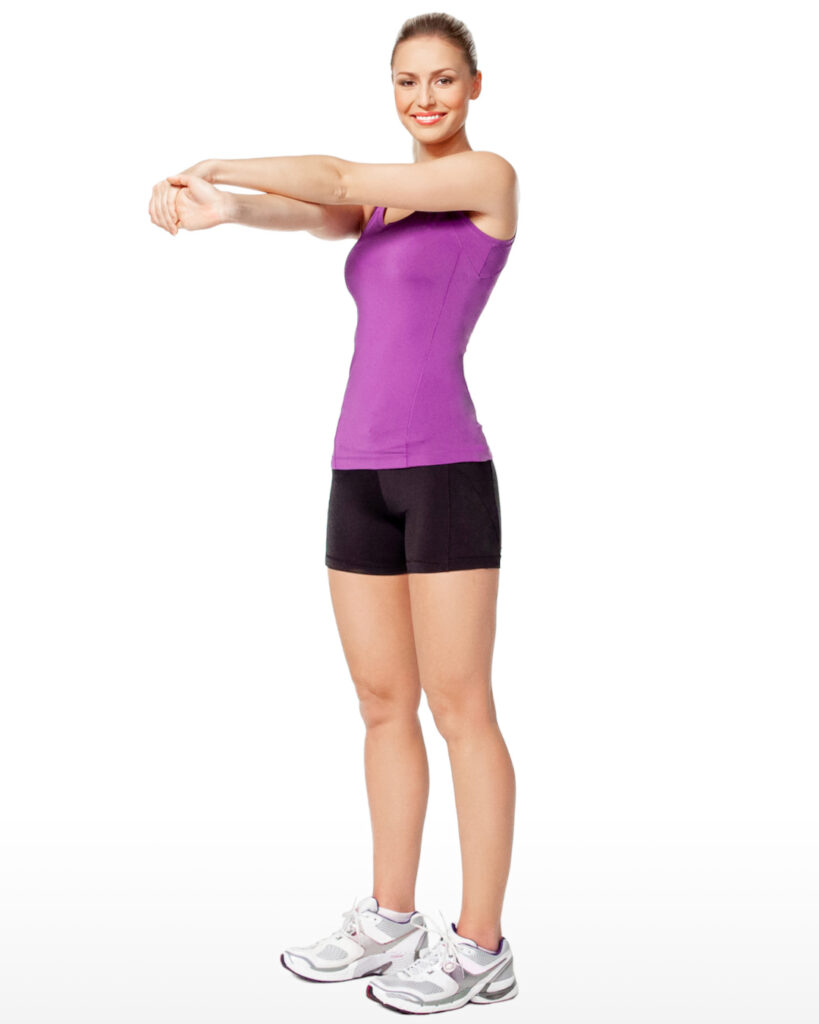
The Wrist Flexor Stretch improves flexibility of the wrist flexors and should be done regularly to reduce the risk for wrist injuries.
Tennis players can experience nagging wrist injuries due to flexibility, strengths and overuse issues at the wrist, especially when working on the serve snap or forehand topspin.
Therefore it is advisable that you incorporate the wrist flexor stretch into your static stretching routine.
The wrist flexor stretch also aids in the muscle recovery process and can noticeably reduce muscle soreness the following day.
Wrist Flexor Stretch Description Summary
- Flex shoulder to 90˚, extend the elbow, externally rotate the arm, and extend the wrist; fingers point outward
- Grab fingers with the other hand and pull towards the shoulder
- Hold stretch for 45 seconds
Targeted Musculature
It targets the flexor carpi radialis, flexor carpi ulnaris, flexor digitorum superficialis & profundus and flexor pollicis longus.

